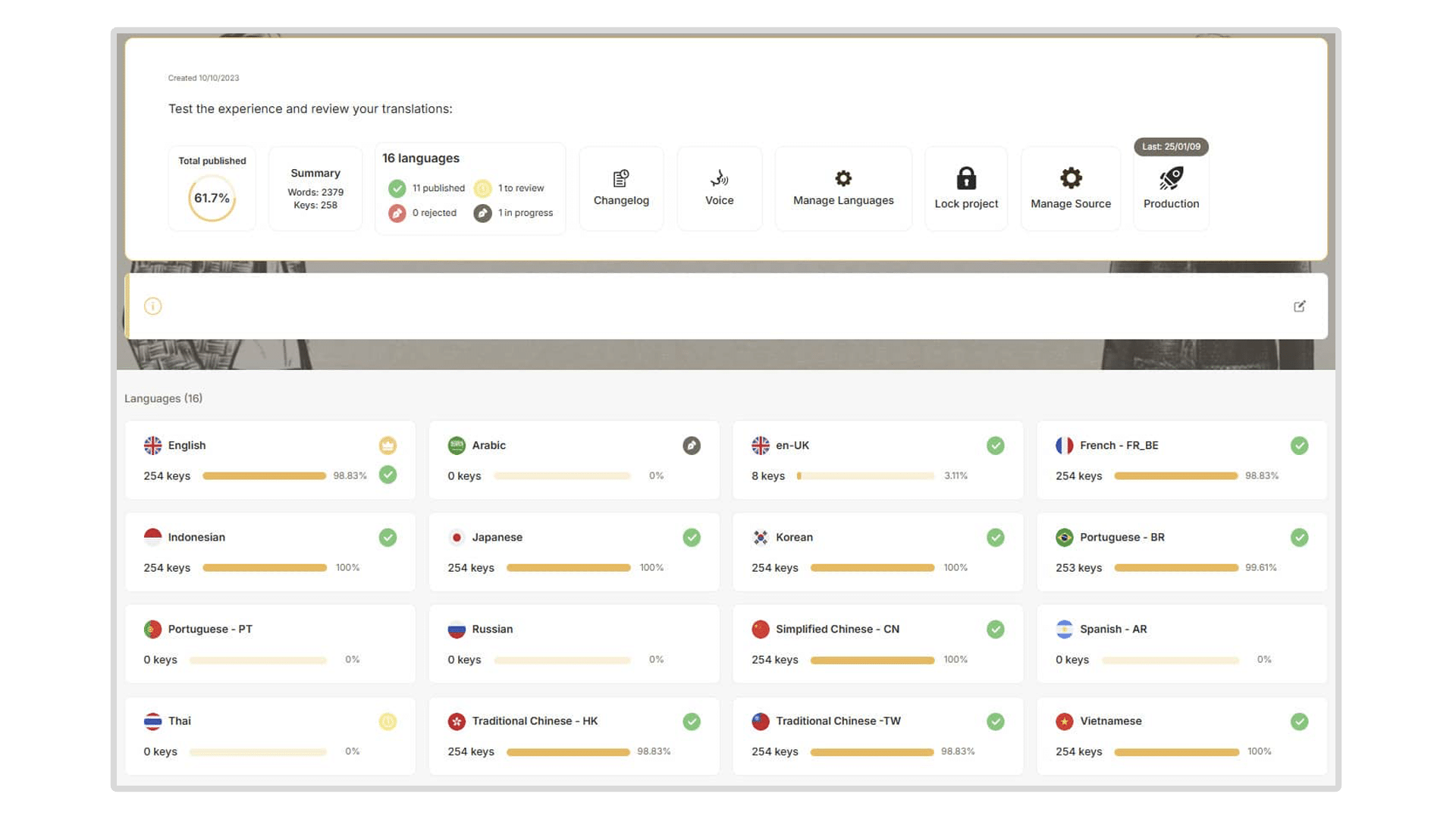
How Gamification Can Improve Training

Over the past few years, we have seen a dramatic shift in employee corporate training. The traditional model of company-sponsored courses and seminars is rapidly giving way to a new Web-centric approach that uses gamification.
While it’s still relatively early in the adoption cycle, this change has already had significant implications for how some businesses approach training.
Gamification is a strategy of applying game design techniques, mechanics, or aesthetics to non-game contexts.
It is widely used to improve the user experience, increase engagement and retention with e-learning, and encourage behavior change. This technique is effective in many different sectors, including nonprofit training organizations, corporate training departments, and more.
Related: Inside the Gamification of Shopping
What Is Gamification in Training?
Gamification entails adding game elements to training to make it more engaging. The goal is always the same: keep people engaged and interested in the learning content.
Companies can apply gamification to any type of training program that requires a learner’s involvement to complete it successfully. This includes both individual and group-based learning environments where the trainer needs additional tools for motivation and engagement of learners to achieve desired results.
The gamification technique has been used in various fields such as marketing, education, and training. It has been seen as a way of creating an environment where people are motivated to learn specific skills or knowledge by giving them rewards like points, badges, or achievements.
A research study by Harris Interactive shows that 76% of people use games to improve their learning experience, and 75% believe that gamification has impacted their personal life, such as becoming more active.
What Are the Benefits of Gamification?

Gamification is a great way to help employees better understand the company culture and values. Some companies have gamified their corporate training by adding points, leaderboards, and badges to motivate employees to complete training courses.
Some benefits of gamification include:
1. Increased Engagement
Engagement is the key to better learning, so using games in corporate training sessions isn’t just more fun; it can also increase learner engagement. But what about gamification?
2. Participants Can Control the Outcomes
Gamification aims to drive meaningful behavioral change within the user by enabling them to shape the experience themselves. This makes learning more personalized, engaging, and enjoyable.
3. It Is Inclusive
Gamification provides points and rewards that can be used to encourage social activity. These points are earned by team members when they perform a specific task. The reward then goes to everyone on that team member’s social graph, including those who may not have been directly involved with the task at hand. This helps foster team spirit and encourages individuals to participate in social activities with one another.
4. It shortens the Feedback Cycle
As training isn’t always fun, gamification helps you keep your audience on track and engaged. The ultimate benefit of using a gamified learning tool is that you can offer shorter feedback cycles, which helps save both time and money.
5. It Leads to Change in Behavior
In corporate training, gamification has proven to be an effective means for driving behavioral change. Similar to using games in commercial environments, it can become more than just a treat for your employees –it can help them make positive changes to their behavior, ultimately aiding them in their learning process.
Employee training is made easier in the 21st-century! Check out Emeraude Escape for more information.
What Is the Difference Between Gamified Training vs Traditional Training
Traditional training relies on the instructor’s knowledge and expertise to teach the learner and does not incorporate any game design elements.
This type of training is generally less effective than gamified training. Although it has been around for much longer than gamified training, it has its limitations regarding retention rates and engagement levels.
Lectures and role-playing are two examples of traditional training methods. These methods require participants to sit passively while instructors explain topics. Participants may struggle to remember information if they don’t actively engage in the material.
Because gamified training is based on the idea that learners learn best by doing, companies can save money by avoiding expensive lecture halls and paying for costly trainers and facilitators.
Also, gamified training helps with retention rates because they are interactive and use various methods like videos, games, quizzes etc., making them fun and interesting for learners.
Gamification training is more flexible than traditional training. Participants can choose the time and place of training, work at their own pace and take breaks whenever they want.
Collaboration among team members helps build relationships and trust, making participants feel more comfortable sharing ideas and opinions.
Examples of Gamification in Corporate Training
Gamification presents challenges based on real-world situations. Numerous renowned companies have adopted this technique of learning. Some companies include:
Wavestone
The Wavestone Virtual Seminar was a digital integration seminar held in June, 2021. Emeraude Escape was called upon to create a digital game that would not only unite teams through social interaction, but would also create interaction between managers and their new consultants. Playing through the game would also reinforce the company’s values and teach the company’s history.
The program provides an interactive and engaging environment that enhances learning by providing an engaging gaming experience..
Lancôme
Lancôme, a French luxury beauty company, is one of the first companies to introduce digital learning to their employees. Emeraude Escape was hired to gamify their digital training course that over 15,000 beauty advisors would have to take.
The Escape Game was created for Lancôme, and has the player go through a tour of Paris to grab Lancôme products and return them to the flagship store by the famous Champs-Élysées river. Following the success of The Escape Game, Lancôme has partnered with Emeraude Escape to create “La Vie est Belle” in 2022.
Datacraft
The founder of datacraft, Isabelle Hilali, worked closely with the team from Emeraude Escape to create an immersive escape game that would not only highlight the importance of data but also highlight the importance of collaboration in business.
Diptyque
Diptyque is a Parisian perfume and candlemaker that also enlisted the help of Emeraude Escape to celebrate their 60th anniversary with a digital treasure hunt game. The game, Le Grand Tour, was awarded the innovation prize at Teach on Mars Mobile Learning.
Get ahead of the trend and learn how companies use gamification for employee training programs. Check out Emeraude Escape today!
Key Features of Gamification in Training

Gamification is not just about making the process more fun and engaging, but also helps to improve the learning outcome.
The key features of gamification in training are:
User Engagement
Gamification is not just about adding points to a leaderboard. It’s about engaging users to make them want to play repeatedly. This can be achieved through using game mechanics such as points, badges, levels, and more. The user should be able to see how they are progressing towards their goal, and this feedback should be given promptly.
Goals
Gamification is about setting goals and then tracking progress towards those goals. When done well, this helps players understand their own strengths, weaknesses, and how they can improve. The user should be able to see what they are trying to achieve and how they can do it.
Learning
Gamification should help players learn something new. If you don’t know what you’re doing, you won’t get much out of playing. The user should also have some degree of choice as to how they progress through the gamified system, but these choices should not distract from the main goal.
Skills
Gamification should give players opportunities to practice skills they already have. If you have mastered a skill, you should be able to show it off through participating in the tasks.
Achievements
Gamification should reward players for completing tasks. Players who complete challenges and reach milestones not only feel rewarded but also gain a sense of accomplishment.
Challenges
Gamification should provide players with opportunities to test themselves. There should be no right or wrong answers; only different ways to solve problems.
Rewards
Gamification should offer rewards for reaching certain goals. These could be anything from virtual currency to physical prizes.
- Intrinsic motivation: The system should reward users with points or other rewards that have meaning within the context
Competition
Competition is one of the most important features. It can be used as a motivational tool for the learners who are engaged in an educational activity. Competition motivates learners to do their best and it also helps them develop their skills. Gamification should encourage competition between players.
Related: Virtual Event Gamification Guide
How to Implement Gamification in Training
Gamification helps companies achieve their business objectives by motivating employees to take action.
So, how can you integrate gamification to their training process?
1. Training
Instead of designing new games, find ways to integrate games into your existing training. Strategy Games are a great way to gamify the training process.
Game elements can be inserted at points where employees need an incentive to perform. They will be focused on specific tasks or behaviors and thus are more likely to carry out the task correctly.
2. Employee engagement
One of the most crucial factors in employee engagement is to figure out a way to keep your employees happy and interested.
Gamification is an effective way to engage your employees and build relationships while still being able to get the work done — incentivizing them is the key!
3. Sales
People love to compete and be rewarded for their work. The key is to use your existing sales-related activities as your points or “currency” and have people enter into a competition to get their reward.
4. Leadership
Gamification can be used for teaching students and professionals alike when it comes to leadership development training. With gamified learning, you can help increase engagement and response from your trainees by providing them with fun tools that motivate them to move forward towards their career goals.
5. Compliance
There’s barely a fun way to train people on regulations, guidelines, and law that doesn’t involve a lengthy PowerPoint presentation about them.
However, gamification in compliance training can help you create a more engaging experience for your workforce and use games to motivate them to gain new knowledge about safety rules and industry-specific laws.
Gamification Training Tips
- Make sure the gamification is aligned with your company’s objectives.
- Keep the gamification process simple and easy to understand for all employees.
- Set up clear rewards for employees for completing tasks or achieving goals in the gamified system.
- Use visuals and animations to create an immersive experience that motivates employees to continue playing the game even when they are not in front of their computers or mobile devices.
- Personalisation is the perfect way to make training more memorable. By designing a course using gaming mechanics such as level pathways and storylines, you can make it fun and engaging.
Why Emeraude Escape?
With its expertise in the digital sector, Emeraude Escape has brought a new, innovative approach to business training programs. Its new concept of company games offers a perfect way to train managers, assess potential and teamwork and enhance company culture.
Emeraude Escape can integrate a unique scenario into your organization’s multimedia content, whether it’s a web-based platform or an in-house application, and can work with you to make sure your participants enjoy playing their game.
If you’re looking for a training tool that can enhance teamwork, give your employees an interesting project to work on, and enhance the cohesion of your team, you should consider adding an Emeraude game to your training arsenal.
Related: Why Should You Use Games For Your Cybersecurity Training
Discover


Book A Demo
Get a personalized demonstration by one of our game design experts.


